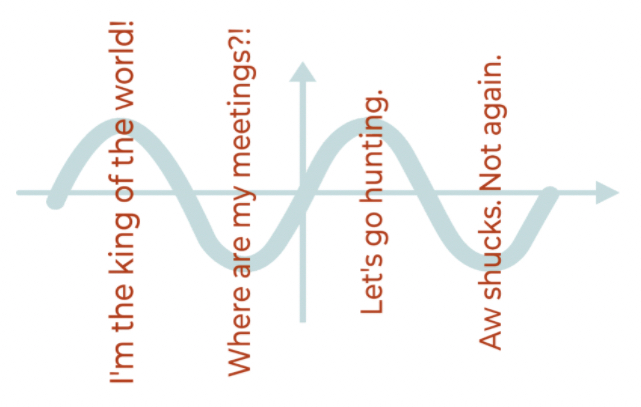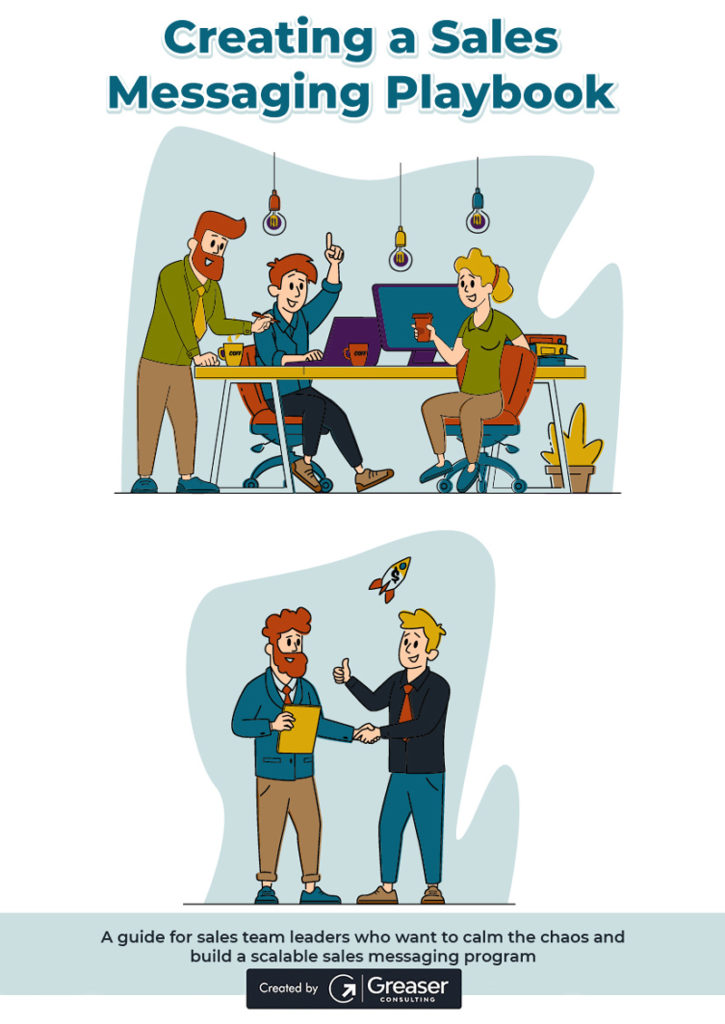Buying software can be like adopting a new pet. It’s exciting and a little scary; you don’t always know what you’re getting into until you bring it home.
For instance, you know how great it would be to jog every morning with an eager dog-friend. But when you have said dog-friend, you quickly learn you have to jog on the rainy days, too. As it turns out, dogs don’t really care about weather forecasts. They just like walks.

We’ve spoken to many revenue leaders who have felt this way about sales execution platforms (SEPs). It’s the eager sales companion they need, running beside their sales reps and helping them to go further than they could on their own.
But from a leadership perspective, it’s more work than anticipated, and it has resulted in a few “messy shoes” from stepping in… unforeseen complications.
This blog will point out where the “messes” are so you can avoid common sales execution missteps and go back to enjoying your sales execution software as “salesperson’s best friend.”
Misstep one: “This takes more attention than I expected.”
Many teams buy sales execution software but don’t support it with sufficient staff. Leaders assign managing the technology, writing the messaging, and facilitating the enablement and change management as side-hustles to already-busy colleagues.
Because this happens a lot, the symptoms are pretty obvious. If you can relate to any of these situations, then it’s probably time to evaluate your team’s capacity, responsibilities, and expectations.
Your “experts” either have no idea what they’re doing, or they’ve quit.
If your sales execution team, or the loose band of people who have responsibilities related to your SEP, is stretched too thin, then you might notice a lot of turnover.
Leaving core functions unassigned often overly-burdens your highest-capacity players. They already had a large task load, but then voluntarily adopted more work (just because it had to get done) that you may not even see. In worst case scenarios, you find out how much workload these folks were carrying in an exit interview.
If this goes on too long, then your remaining “experts” are probably people with very little experience who Google every problem. True experts are born out of 1) a specific focus and 2) time to hone their skills. Don’t rob yourself–or your hard-working employees–of the opportunity for your most talented to get really good at their jobs.
You know there are problems, but you don’t have time to do anything about them.
One of the other symptoms of overloaded team members is the “bandwidth labyrinth.” Nobody has the bandwidth to determine how much bandwidth is needed to fix a problem.
Yes, that was intentionally confusing. Sorry for the migraine, but it helps to illustrate the point: without the time to step back and evaluate what makes your current context so frustrating, you and your team are stuck in an endless maze of doing the same things, even though you know they aren’t working.
It boils down to this: everyone sees that there is a problem, but nobody has time to identify the source, ask for specific help, and propose a clear solution.
With SEPs, this usually means leaders know they need more people, and they understand that there are performance gaps, but they don’t have the time to sit down and make a plan.
The result is a lot of bootstrapping and continuous meetings where they ask for additional budget to hire more people, but their proposals are spiked because of a lack of specificity and validation.
You thought reps would love your SEP, but you’re not even sure if they’re using it.
Many sales leaders heavily invest, not only in sales execution software because it will make their reps’ lives easier, but also in enablement and messaging to support it, only to see it sit there and collect dust.
In order for a team to adopt an SEP, revenue organizations need to implement a change management plan that involves reps and managers in co-creating the strategy, facilitates the transition with proper enablement and support, and then holds people accountable for actually using it.
If you don’t, then your end users might either feel like the SEP is creating more work for them, putting them out of a job, or replacing recognizable language and workflows with tactics and messages they wouldn’t ordinarily use.
All of these feelings lead to one outcome: going rogue and avoiding using the SEP, which wastes a ton of money, time, and resources.
All of these symptoms can be addressed with one solution: assigning the right people to the right roles.
This is as much a change management strategy as it is a human resources concern. A major part of building a sales execution program, which is the full infrastructure you need for a thriving sales execution strategy, is actively engaging your people in every aspect: messaging, operations and administration, strategy, and training.
No matter how much money you throw at technology and training, if your people don’t feel included, then they will resist any change you attempt to implement.
But in order to know who to include, and how to maximize their contributions, you need to arrange your sales execution team so that your cross-functional contributors own very clear and specific deliverables.
When people are in the right seats, and they’re invited to share their thoughts “from the ground,” the results will not only be better, but they will also take a lot less time and energy from leadership.
For example, if your sales ops team feels safe speaking up and admitting that they’re at capacity, highlighting exactly what they no longer have time to do; then you know what responsibilities you need to hire to cover.
Or when sales reps feel empowered to contribute their ideas about messaging, your sequences and cadences will transform from one-size-fits-all copy into the “voice” of your team. When they open the SEP and see their ideas represented, they will be much more likely to send those sequences or cadences to their prospects.
If you know your team has capacity issues, but you’re not sure where to start, we can guide your team through creating a change management strategy and a “people plan” for a thriving sales execution program.
Misstep two: “I didn’t know they had permission to do that.”
Administering an SEP is like stepping into the cockpit of a spaceship. There are a lot of settings and switches that most users, even advanced ones, would look at and say, “what does this do?”
That’s why it’s vital to make sure your permission levels and access settings are properly configured. If you don’t, then your well-meaning reps might be “spring cleaning” your SEP and unintentionally deleting contact records from your CRM. Or, your platform may be so locked down that your reps and managers can’t see what messages and salesplays are converting well.
While it’s likely not your job to fix these problems directly, you can’t direct resources to address the errors you don’t see. And because you depend on data to make important decisions, you can’t afford not to protect it.
This is often a less obvious problem than pitfall number one, so pay close attention to the symptoms.
You’re either drowning in, or starving for, data.
If your SEP’s permissions are too loose, then your SEP is a bit like the breakroom refrigerator just before cleanout day. With limited oversight, reps have been invited to create their own sequences, cadences, templates, and snippets. The result is a confusing number of salesplays, with a small number of sends through each, and a very unclear dashboard of what is performing well.
If your permissions are too strict, then sales reps and managers can only see the messaging they have created. They’re not able to learn from other teams or to see how their content stacks up. They may be unintentionally reinventing the wheel or using outdated tactics which other teams have discovered are no longer effective.
You have a lot of messy data.
One of the complexities of running an SEP is deciding how data should flow through your integrations to other tools in your tech stack. Someone on your sales operations team will probably manage your integrations, but high-level decisions about data security should be a chief concern for revenue leaders.
The way we often break this down is by separating your system of record (often a CRM) from your system of action (your SEP). You need to be able to act on a lot of data in your SEP, but it probably isn’t your “source of truth” for all customer information.
Your CRM, or a program you’re using as a functional CRM, is your system of record where permanent records, prospect contact information, opportunity history, and the like should be carefully stored.
If you don’t draw this distinction and protect your CRM from the green sales rep who doesn’t mean to delete all of the opportunity history for a priority account, then (needless to say) bad things can happen.
Without these boundaries, it’s challenging to trust the data inside of your SEP and flowing out and into tools other teams are using to interact with prospects or pull critical reports.
Misstep three: “Can’t we automate that?”
Almost every team starts using an SEP with misunderstandings about automation. Some sales leaders are shocked that they still need sales reps to run it. Others mistrust their SEPs so much that every sequence or cadence step is manual.
But leaning toward either extreme takes away much of the SEP’s power. One of the major value propositions for sales execution is “personalization at scale.” This implies that both personalization (manual attention) and scale (high numbers) should both be present.
Use automation to complement your sales team’s hard work, not replace it.
If your reps are utilizing too much automation, then you may start to see problems in lower-than-usual conversion rates. If they’re putting high numbers of prospects into sequences or cadences, but not seeing meetings booked, then it’s time to see if the messaging is too generic.
We have also worked with teams who used SEPs mostly as a marketing tool, sending mass emails to invite people to events or share feature updates. If you want a software that can send a lot of emails, Mailchimp is a lot cheaper. If you want sales execution, then you need a different approach.
If you send the same email from your SEP that you would through a marketing automation tool, then you’re doing something very wrong. Stop here and read our content on developing a sales messaging program.
Then, talk to your sales ops folks about turning off the mass emailing permission for all of your sales reps. Only admins need this function, for very specific scenarios. We know this isn’t in your wheelhouse but trust us, if you don’t make this happen, the line between sales and marketing messages will never be as clear as it should be.
Don’t hesitate to lean on automations that can make your reps more efficient.
Your revenue KPIs are never going to shrink, and your budget to hire sales reps is limited, so it only makes sense to leverage every available tool to help each rep generate more pipeline.
SEPs are intended to be activity multipliers, giving reps hours back into their days to sell. By automating tasks like updating CRMs, which can take up to four hours a week, your reps can focus on tasks only they can perform. This leads to more meetings, opportunities, and revenue for your team.
And yet many sales leaders won’t allow the SEP to help them. By keeping sequences or cadences full of manual steps like personalized emails, reps aren’t really saving that much time. If this describes your sales shop, then you may as well buy them Asana instead. You’re turning your SEP into a to-do list, not a sales multiplier.
There are a lot of ways to nail sales email personalization.
The balance is found when revenue leaders bring together voices from marketing, product, sales, and customer success to establish specific buyer personas. And if you’re an account-based team, to segment your verticals into tiers.
Once you know the audiences your sales team most frequently engages, you can start to do two things: prioritize them and create tailored messaging and workflows.
Based on the priority of the persona or account, that messaging can be more or less personalized. For instance, a high-value account should be placed into a sequence with more calls and individualized emails. However, a lower-tier account may have very few calls and emails that are either entirely or mostly automated.
The “personalization” for this lower-tier account might be that the sequence they’re in, though fully-automated, sends emails with pain points specific to their industry. So, even if the prospects are receiving the same emails 50 other people are getting that day, the emails feel personal.
Once you have this strategy established, reps should be able to refer to a central resource, like a sales messaging playbook, to know exactly what salesplays to choose in each scenario. That salesplay should guide them through the time investment they should be making into that specific prospect.
If you trust your SEP to maintain this strategy–which you have complete control over creating–it will naturally guide your reps to a place of balance between automation and personalization.
Misstep four: “Why is it always feast or famine?”
If a team is using an SEP properly, then their meetings booked and other revenue KPIs should look like a relatively consistent upward curve. If they’re not, then it will look more like a heart monitor. Or, if you’re particularly math-inclined, a sine wave.
Outreach’s Mark Kosoglow coined the phrase “The Sine Wave of Sales,” and it’s a great way to describe the inconsistent outcomes teams can expect if they are not constantly putting in time “hunting” or prospecting new business.
If your sales teams fluctuate wildly between feast, when they can’t seem to keep up with prospects and meetings, and famine, when nobody is picking up the phone, then they’re not consistent enough in their workflows.
Inconsistency in workflow will end up looking something like this:
- “This SEP is pretty cool. I got a meeting while I was putting on my socks this morning!”
- “With all of these meetings, I don’t have much time to prospect.”
- “I would rather work these accounts than go back to hunting.”
- “Wait. Where did my meetings go?”

As Mark points out, your revenue team doesn’t have to live this way. One of the major benefits of an SEP is the ability to track rep activity and set benchmarks for consistency. If your sales managers aren’t requiring reps to sequence or cadence a specific number of new prospects per week, and utilizing reporting tools to enforce it, then your revenue will continue to look like a sine wave.
The benchmark sales managers should set will vary based on the circumstances, as some reps are focused on smaller numbers of target accounts, and others are focused on high-volume outbound. However, no matter what the targets may be, the number of new prospects entering the funnel should be the same week over week.
Time to start cleaning up the messes
Now that we have pointed out a few of the common missteps that slow down sales execution teams, it’s time to take the right steps to clean up any messes which these problems may have left in your “yard.”
- Identify which of these issues are wreaking the most havoc in your revenue org.
- Bring in internal subject matter experts who “own” related areas of your business.
- Collaborate on ways to implement our advice for moving past these missteps.
- If you need help, give us a shout.
